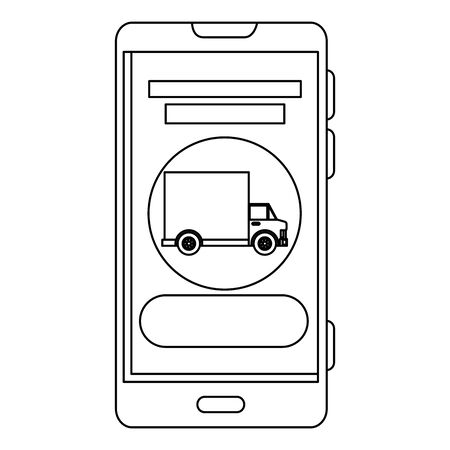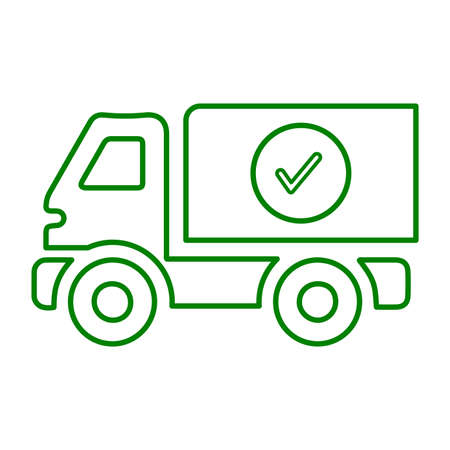Understanding Non-Fault Accidents in the UK
For many British motorists, the concept of a non-fault accident can feel a bit like navigating a winding B-road on a misty morning. In simple terms, a non-fault accident occurs when you’re involved in a collision or incident where another party is deemed responsible for the damage to your vehicle, and your insurer is able to recover all costs from the third party’s insurance provider. Understanding how liability is determined—and what situations commonly lead to non-fault claims—can make all the difference when it comes to keeping your self-drive adventure on track.
| Scenario | Description | Who’s Usually Liable? |
|---|---|---|
| Rear-end Shunt | Your parked car is hit from behind at traffic lights or a roundabout. | The driver who hit you |
| Side Impact at Junctions | Another motorist fails to give way and drives into your side at a junction. | The other driver (failure to yield) |
| Hit While Parked | Your stationary car is damaged while legally parked on the roadside. | The driver who caused the damage (if identified) |
| Third Party Admits Fault | The other driver admits full responsibility at the scene or through their insurer. | The admitting party/insurer |
Liability in the UK is usually established by examining road traffic laws, statements from those involved, and sometimes dashcam or CCTV footage. It’s not always clear-cut, especially when both parties dispute what happened. That’s why it’s crucial to gather as much evidence as possible at the scene—photos, witness contact details, and even a note of weather conditions. With this groundwork, your insurer can pursue the responsible party and keep your claims record untarnished, so you’re free to plan your next camping escape without unexpected hikes in your premium.
2. Reporting the Incident: Step-by-Step
If you find yourself in a non-fault car accident while touring the UK’s scenic roads, knowing exactly what to do next can make the claims process much smoother. Here’s a practical, UK-specific guide to ensure you gather all necessary information and follow best practices right from the get-go.
Immediate Actions at the Scene
- Ensure Safety: First, check everyone is safe and move vehicles out of traffic if possible.
- Contact Emergency Services: If there are injuries or road obstructions, call 999 or 101 as appropriate.
Essential Information to Collect
The more details you gather, the easier your claim will be. Use the table below to keep track:
| Information Needed | Details/Examples |
|---|---|
| Name and contact details of all drivers involved | Full name, UK address, phone number |
| Vehicle registration numbers | E.g., AB12 CDE |
| Insurance details (company & policy number) | E.g., Aviva, Policy #1234567 |
| Date, time & location of incident | E.g., 15 June 2024, 14:30, A82 near Glencoe |
| Description of damage & photos | Take clear photos from multiple angles |
| Names & contacts of witnesses | If available—get statements if possible |
Contacting Your Insurer
- Notify your insurer as soon as possible—many UK policies require this within 24 hours, even if you are not at fault.
- Provide all collected information and photos for a quicker assessment.
What to Say and Do When Reporting
- Stick to facts; avoid speculating or admitting liability.
- Mention if you have dashcam footage or independent witnesses—these are highly valued by UK insurers.
Best Practices Unique to the UK
- If the other party fails to provide insurance details, note their vehicle registration and report to the police (as required by UK law).
- If your journey involves towing a caravan or camping trailer, mention this when making your claim—it may affect cover specifics.
Tackling these steps efficiently means less stress on your travels and puts you in the best position for a successful non-fault claim under UK law.

3. Dealing with Insurance Companies
Once you’re caught up in a non-fault car accident on British roads, the next step is navigating the sometimes labyrinthine world of UK insurance providers. Understanding how insurers process these claims can help take the sting out of the situation, whether you’re swapping details on a rainy layby or sorting paperwork from your campervan. Here’s what you need to know about interacting with your own provider versus the third-party insurer, and which documents you’ll typically be asked for.
How UK Insurers Process Non-Fault Claims
Most major UK insurers will start by confirming that you were not at fault, often relying on police reports, dashcam footage, or witness statements. Once liability is established, your own insurer may handle repairs and then recover costs from the at-fault party’s insurer—a process known locally as “knock-for-knock” or subrogation. If you have legal cover as part of your policy, your provider might also assist with personal injury or loss of earnings claims.
Documents You’ll Likely Need
| Document | Purpose |
|---|---|
| Insurance Certificate | Proof of valid cover |
| Driving Licence | Confirms identity and eligibility |
| Accident Report/Police Reference Number | Official record of incident |
| Photos/Dashcam Footage | Visual evidence of damage and circumstances |
| Witness Statements | Third-party confirmation of events |
Your Provider vs Third-Party Insurer: What to Expect
Your own insurer is typically your first port of call and will talk you through their claim process—often via an online portal or a dedicated claims handler. They’ll keep you updated about repairs and courtesy cars (if included in your policy). The third-party’s insurer may reach out directly if liability is clear; they might offer to handle repairs or provide a replacement vehicle. While this can speed things up, always check that any offers won’t affect your no-claims discount or leave you liable for hidden costs. Here’s a quick comparison:
| Your Insurer | Third-Party Insurer | |
|---|---|---|
| Who initiates contact? | You (or via broker) | Them (if accepting liability) |
| Repairs arranged? | Usually included | Often offered as goodwill |
| No-claims discount impact? | No (if truly non-fault) | No impact if settled correctly |
A Few British Touches to Remember
If you’re ever unsure about letters from insurers or settlement offers, don’t hesitate to consult Citizens Advice or seek legal input—especially if you’re road-tripping far from home. With the right paperwork and a cuppa in hand, even insurance admin becomes just another part of your UK adventure.
4. Replacement Vehicles and Repair Choices
If your car is off the road after a non-fault accident, one of your top concerns will likely be how to keep moving—whether you’re heading out for a weekend wild camp in the Lake District or simply getting to work. Here’s what you need to know about securing a courtesy vehicle and making informed repair choices in the UK.
Securing a Courtesy Car or Camper
Most comprehensive car insurance policies in the UK offer a courtesy car while yours is being repaired, but there are some nuances worth noting. If you rely on your vehicle for travel or outdoor adventures, ask your insurer specifically about options for larger vehicles like campers or SUVs.
| Type of Vehicle | Availability | Notes |
|---|---|---|
| Standard Courtesy Car | Usually included with comprehensive cover | Typically a small hatchback; subject to availability |
| Like-for-Like Vehicle (e.g., camper) | Varies by insurer and policy level | May require an upgraded policy or additional fee |
| No-Fault Claims Courtesy Car | Often provided by third-party claims management companies | Should not affect your own no-claims bonus |
Your Right to Choose a Repair Garage
In the UK, you usually have the right to choose where your car is repaired—even if your insurer recommends one of their approved repairers. This can be particularly important if you trust your local garage or need specialist repairs for campervan conversions.
Considerations When Choosing Your Repairer:
- Insurer Approved Garages: May offer guaranteed repairs and streamlined paperwork, but limited flexibility.
- Your Own Choice: More control over quality and location, but check if you might have to pay extra excess or if any guarantees differ.
- Manufacturer Approved Repairers: Essential if your car is under warranty or leased; maintains manufacturer standards.
The Nuances of UK Repair Networks
UK insurers often have networks of preferred repairers, which can mean faster repairs and direct billing between the garage and insurer. However, it’s always wise to double-check:
- If using a non-approved repairer affects your claim process or costs.
- The length and terms of any repair guarantee—especially important for long-term reliability on those extended camping trips!
- If you’ll still get a courtesy car when choosing an independent repair shop.
A Quick Tip for Campers & Adventurers:
If you use your vehicle for more than just commuting—think towing caravans, carrying bikes, or as a mobile home—be upfront with your insurer about your needs. Some policies may offer upgrades specifically for adventure vehicles, ensuring you’re never left stranded when wanderlust calls.
5. The Impact on Your No-Claims Discount (NCD)
One of the biggest concerns for drivers in the UK when dealing with non-fault car insurance claims is how these incidents might impact their cherished no-claims discount (NCD). Even if you’re not to blame, making a claim can sometimes affect your bonus, especially if your insurer cannot recover costs from the at-fault party. This is particularly relevant for those who frequently travel or enjoy camping getaways, as more time on the road naturally increases your risk exposure.
How Non-Fault Claims Affect Your NCD
In most cases, if your insurer successfully reclaims all costs from the responsible party’s insurer, your NCD should remain intact. However, complications arise if there are delays or disputes in settling the claim. Below is a handy table to illustrate potential outcomes:
Scenario |
NCD Impact |
|---|---|
Non-fault claim, all costs recovered |
No impact on NCD |
Non-fault claim, costs not fully recovered |
NCD may be reduced at renewal |
Multiple non-fault claims within a year |
Insurer may review or limit future cover |
Tips to Protect Your No-Claims Discount When Travelling and Camping
- Consider NCD Protection: Many UK insurers offer an optional extra to safeguard your NCD after one or two claims per policy period. This can be invaluable for regular adventurers who put in more miles than the average motorist.
- Always Report Accidents Promptly: Swift communication helps ensure your insurer has the best chance of recovering costs from the at-fault party.
- Gather Evidence: When out on remote roads or campsites, take clear photos and collect third-party details after any incident—this supports your non-fault status and claim recovery.
- Use Dash Cams: A dash cam can provide crucial evidence to back up your version of events and speed up the process of assigning fault.
- Check Your Policy: Before heading out on long trips, review your insurance documents to understand how your provider handles non-fault claims and what steps you need to follow.
If you’re a keen traveller or camping enthusiast navigating UK roads, staying informed about your NCD rights and options is key to keeping insurance premiums as low as possible while enjoying peace of mind on every journey.
6. Settling Up and Next Steps
Once your non-fault car insurance claim in the UK has reached its conclusion, it’s time to tie up any loose ends and set your sights on the next adventure—be it a drive along the Cornish coast or pitching up at a Lake District campsite. Here’s what you need to know about finalising your claim, recovering excesses, challenging liability if necessary, and hitting the road again with peace of mind.
Finalising Your Claim
Your insurer will confirm when your claim is settled, usually in writing. This confirmation should include details such as payment for repairs, hire vehicle arrangements, and any compensation due. Keep all documentation handy for future reference—especially if you’re planning more road trips or camping getaways.
Recovering Your Excess
If you paid an excess up front, you might be able to reclaim it from the at-fault party’s insurer. The process varies depending on whether liability has been accepted, but your own insurer often assists with this. Check the table below for a quick guide:
| Scenario | Excess Recovery Action |
|---|---|
| Liability admitted by third party | Your insurer claims back your excess from the at-fault insurer; you are reimbursed. |
| Liability disputed | You may need to provide further evidence or pursue a claim via the small claims court. |
| No response from third party | Your insurer may escalate matters or advise legal action. |
Disputing Liability
If there’s disagreement over who was at fault, don’t panic. You have options:
- Gather Evidence: Photos, dashcam footage, witness statements and police reports can all bolster your case.
- Liaise with Your Insurer: They may negotiate on your behalf or recommend mediation services.
- Seek Legal Advice: Especially useful if you’re facing a lengthy dispute or potential impact on your no-claims discount.
Getting Back on the Open Road—or Campsite!
With your car restored and paperwork squared away, you can return to exploring Britain’s scenic byways or enjoying nights under canvas. Remember:
- Check Your Documents: Ensure all claim-related paperwork is filed safely—just in case you need it again down the line.
- Review Your Cover: Consider whether your current policy still fits your travel style; perhaps breakdown cover or personal belongings protection is worth adding if you’re keen on more camping trips.
- Drive On with Confidence: Knowing how to handle non-fault claims means less stress next time—and more time enjoying life’s journey.


